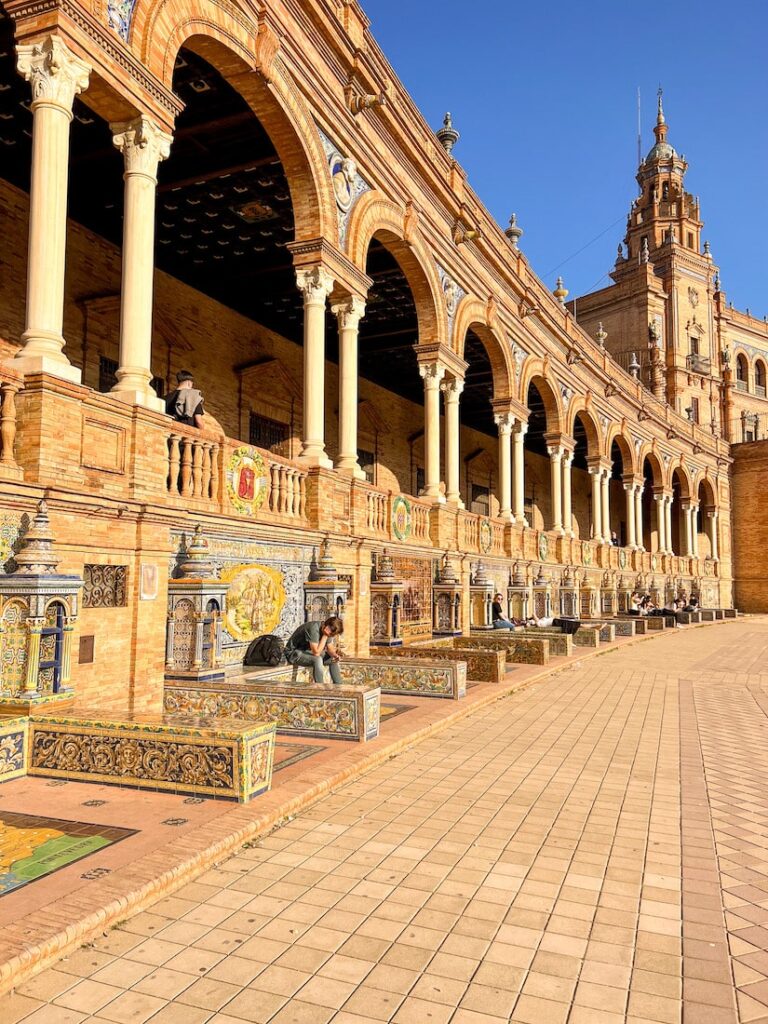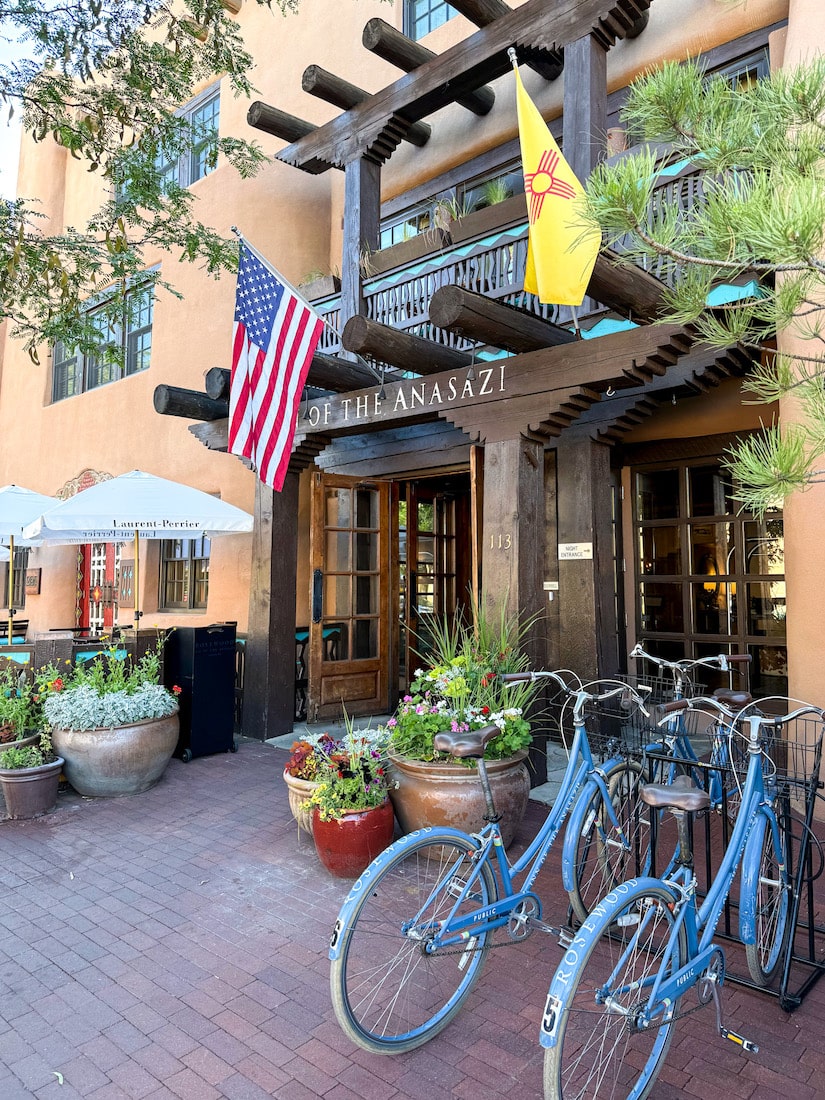Not all perfect European vacations have to take place in the summer. Perhaps the best time to visit Europe is in the winter. I was hesitant to visit Spain in January, particularly due to uncertainty about the weather. Visiting Spain in January turned out to be the most pleasant surprise. I even found myself considering Spain as a yearly January destination. As we all know, weather and temperatures could vary from year to year, but I found the temperatures perfect for wandering Madrid and Seville on foot. Let this be your travel guide to help plan your visit to Spain in January.
Note: This post contains affiliate links. If you click on a link, I may receive a small commission at no cost to you!
Flights & Fares
Flights and fares to Spain in January can be rather favorable. This was the main reason why I considered this destination and ultimately booked the trip. American Airlines offers great options to Spain through Dallas, Miami, Philadelphia, New York, and Charlotte. Their partner airline Iberia also flies direct from Chicago. This allows for easy access to Madrid. There is also the option to fly direct to Barcelona through many cities in the United States. Once you arrive in Madrid or Barcelona, the train system throughout Spain really allows you numerous day trips that I will discuss in more detail below.
Weather in January
Prior to booking, the main question that I had was regarding snowfall in Spain. It took a bit of research for me to realize that, in Madrid and Seville, the chance of snowfall during our trip was relatively low. The last time that Madrid saw a significant amount of snow was in January of 2021. To put things in perspective, this was the largest amount Madrid had seen since 1971. The chance of snow in Seville is even less likely with only two snowfalls in the 20th century.
Madrid and Seville are both extremely walkable cities. Average temperatures in Madrid ranged from 40 to 60 degrees Fahrenheit during my travels. This left the temperature very comfortable for walking throughout the day. There was not any rainfall during our trip. January is not typically a month that sees an excessive amount of rain. Temperatures in Seville average very close to that of Madrid. During my visit, the temperatures reached 70 degrees Fahrenheit two afternoons. It was fantastic yet unexpected to walk around in such comfortable weather.
Train Travel throughout Spain
While you could certainly spend an entire week in Madrid or Barcelona, the train network throughout Spain is impressive. You have to take advantage of the access to other smaller, stunning cities in the country. Atocha Station is your departure point from Madrid. You can use the link provided to search your options with Omio.
Here are some important considerations for your train travel. At Atocha Station, plan to arrive with time to spare. This is primarily because you will spend time going through security unlike some other rail stations in Europe. The line was not terribly long in January, but you would not want to arrive last minute and not take this into account. In the off season, it is possible to purchase your rail tickets relatively last minute. They had many options for travel to Seville, and I did not find that any of the trains sold out. There is plenty of room for luggage storage on the train. Finally, if you are traveling with a child or baby, a lap infant will need their own ticket. They can print one at the station if needed and are able to help even if you speak little to no Spanish. On the train, there are baby changing stations in all of the restrooms. All of the bathrooms on board were clean and well attended.
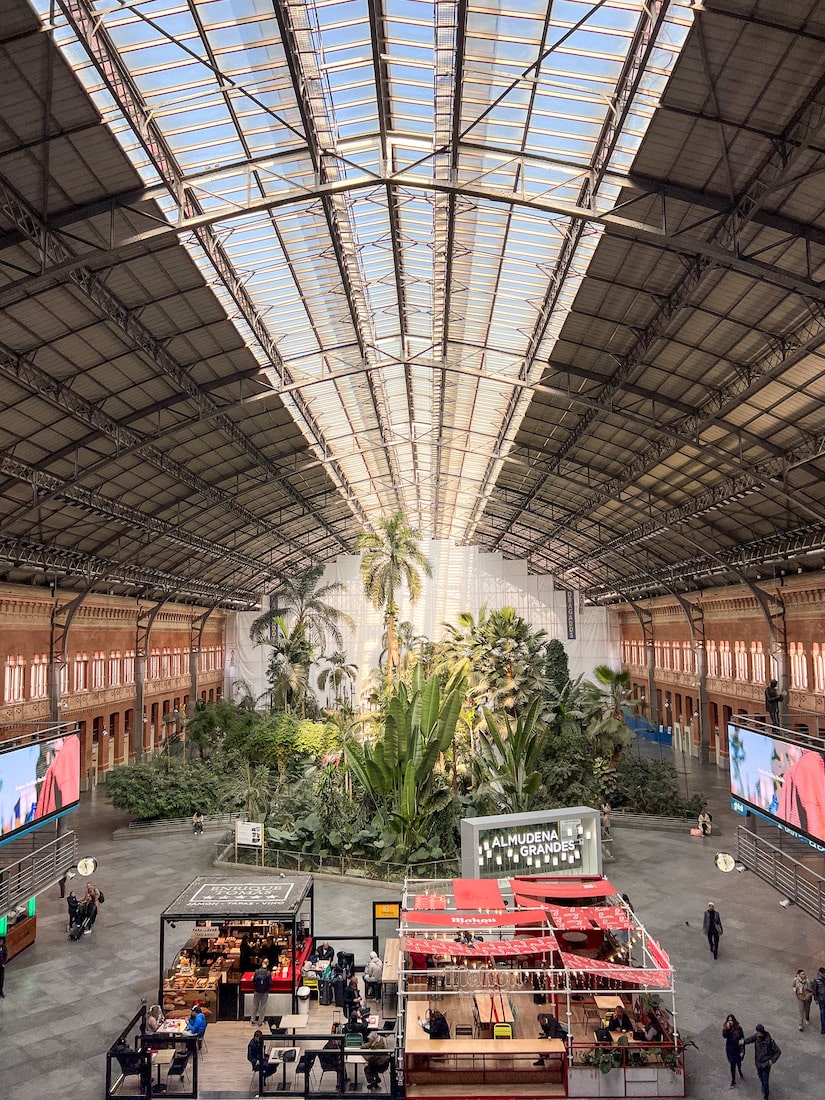
Consider the following destinations to add a couple of nights outside of Madrid to your itinerary. These are just some trip ideas that could easily fall in a one week vacation. For travel to southern Spain, the train between Madrid and Seville will make a stop in Cordoba and arrive in about 2 hours 20 minutes. Both Seville and Cordoba are beautiful destinations perfect for exploring in a couple of days. You can also travel all the way to Malaga and Granada in just over 3 hours. You could stay closer to Madrid and make a day trip to Toledo or Segovia. If you are willing to make a slightly longer journey, travel to northern Spain is possible. There is a high speed train that travels to San Sebastián in just over five hours.
Where to Stay
I will include below options for hotels in Madrid and Seville. I have personally stayed at all of these hotels, so I feel comfortable recommending them. Oftentimes, I like to contact the hotel in advance of my stay to leave my questions up to the local experts. It is always nice to get their dining recommendations or other insight they may have prior to visiting.
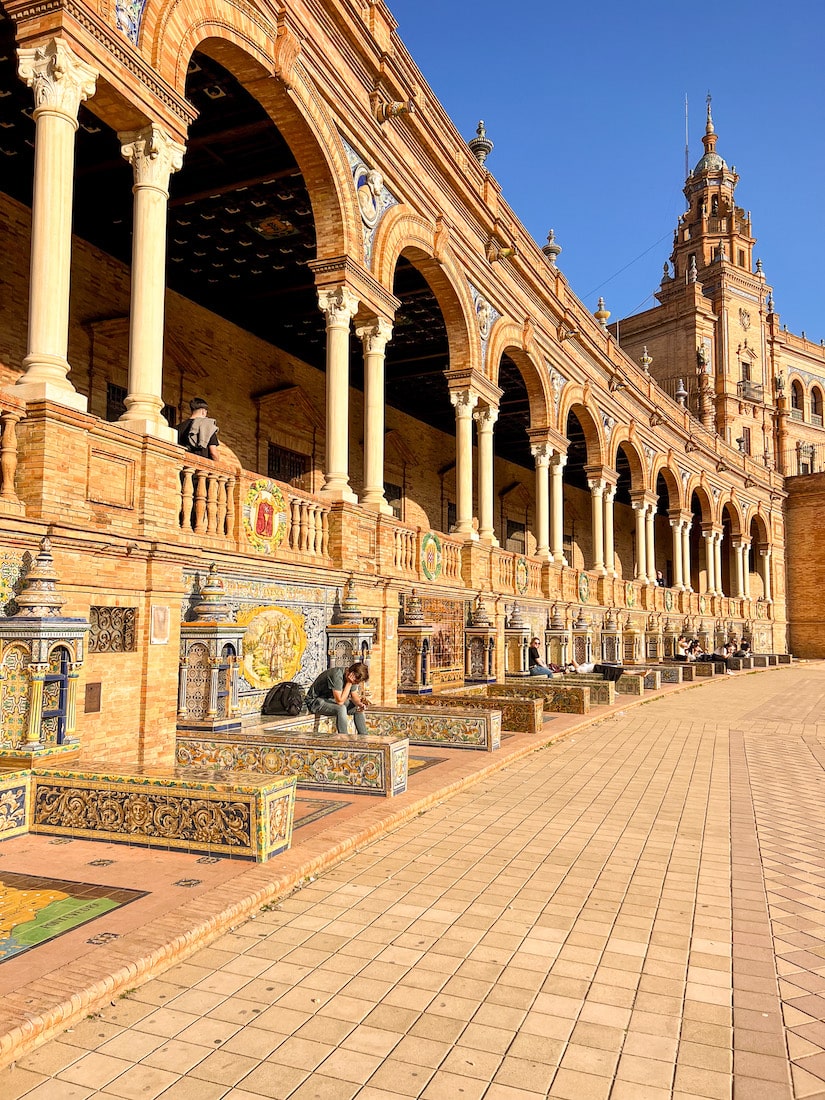
The Madrid EDITION. This hotel aligns you in a fantastic location for exploring the city of Madrid on foot. It is located steps away from the Monasterio de las Descalzas Reales and within a short walking distance to the must visit food hall, Mercado de San Miguel. The front entrance is a showstopper with brown wood and a white spiral staircase that takes you up to the hotel lobby. The rooms are very modern with a muted color palate and minimalist design. I found this property through Amex Fine Hotels & Resorts. The hotel staff were very friendly and allowed us a very early check in after arriving from overseas. I do not have any hesitation in recommending this property. You can access more information about the hotel here.
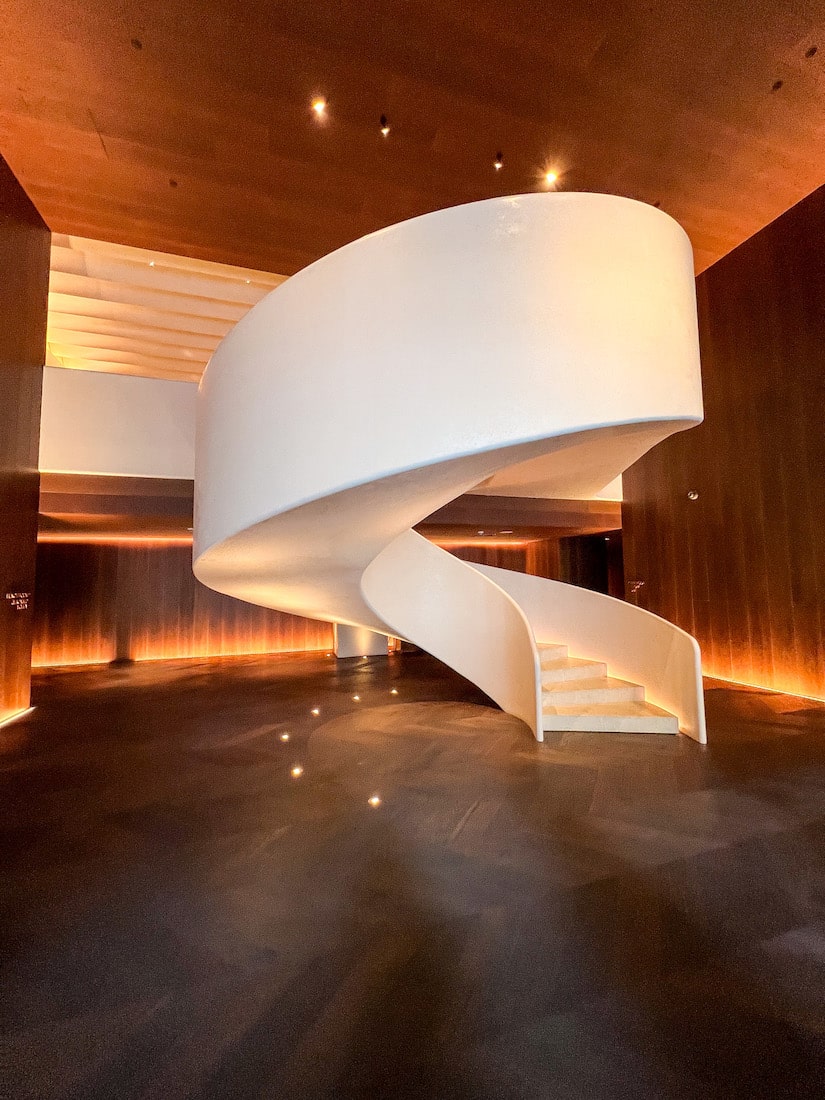
Palacio de los Duques Gran Melia Hotel. This Madrid hotel is about a 10 minute walk from the Madrid EDITION. It is a member of Leading Hotels of the World. Probably what sets this hotel apart is having something called the Red Level. Red Level is similar to a club level and includes a lounge and access to additional amenities. Guests have a separate check in area just off the main lobby. This is where you will find the private lounge with snacks and alcohol. All of the beverages in the lounge and food are included in your stay. Their champagne was Ruinart, which I felt was a very nice bottle to be provided in unlimited supply.
In the morning, you can start your day with an included buffet breakfast and a la carte dining menu. Their food choices were really spectacular, particularly their egg with brie and truffle. Red level is a great option for families traveling with children. The lounge provides a place to enjoy meals and snacks without the formality of a seated restaurant. It is a great place to take a break and relax throughout the day. If it were not for a stay on the Red Level, I would have preferred the Madrid EDITION. The lounge provided the benefit here. Here is a link for more information on Palacio de los Duques.
Hotel Alfonso XIII, a Luxury Collection Hotel. This Seville hotel is the perfect addition to your side trip from Madrid. The Hotel Alfonso is well located within walking distance of most of the major sights and attractions. A favorite part of my stay was their breakfast. They have a lovely spread of breads/pastries, meats/cheese, fruit, and hot breakfast items. This is accompanied by many beverages including fresh juices and sparkling wine. The inside of the hotel is appointed beautifully with a striking attention to detail including lovely tile work and intricate ceilings. If you have status with Marriott, this hotel did provide me with an upgrade even after booking only their entry level room. The Hotel Alfonso XIII is a wonderful choice for your stay in Seville.
Attractions & Considerations
Prior to visiting a new country, I always like to check into hours of museums, attractions, shopping, and restaurants. If you are visiting Madrid and Seville, here are a few things to take into consideration. Seville alone has three UNESCO world heritage sights. One of them is the Royal Alcazar. A visit to the Royal Alcazar does require advanced timed entry tickets. In the more popular months, the availability can be scarce if you do not book well in advance. Keep this in mind as something to look into and book immediately if you are visiting Seville. Here is another option from get your guide to see the Royal Alcazar and visit the cathedral and Giralda tower with a tour and timed entry tickets. During my visit, I spent too much time at the Royal Alcazar and realized a visit to the cathedral and Giralda tour would not be feasible until the following day.
Dinner reservations are also something that I try to book well in advance, particularly if there is a coveted restaurant of interest. In Madrid, there are a few places of interest. The first two center around the Michelin starred chef David Munoz. He has a couple of restaurants. The first is the famous Diver XO found on the list of 50 best restaurants in the world. Reservations are opened six months in advance, and they can be very difficult to come across. If you are not able to secure a spot, you can try street XO. This is a more casual restaurant that does not take reservations. It is on the top floor of El Corte Ingles department store in the Salamanca district of Madrid. I did not try the restaurant; however, after returning home from our trip it I watched a feature on Netflix’s show Somebody Feed Phil. This restaurant does not take reservations, but you may find yourself in a queue outside prior to opening in order to gain access to this menu of unique food and cocktails.
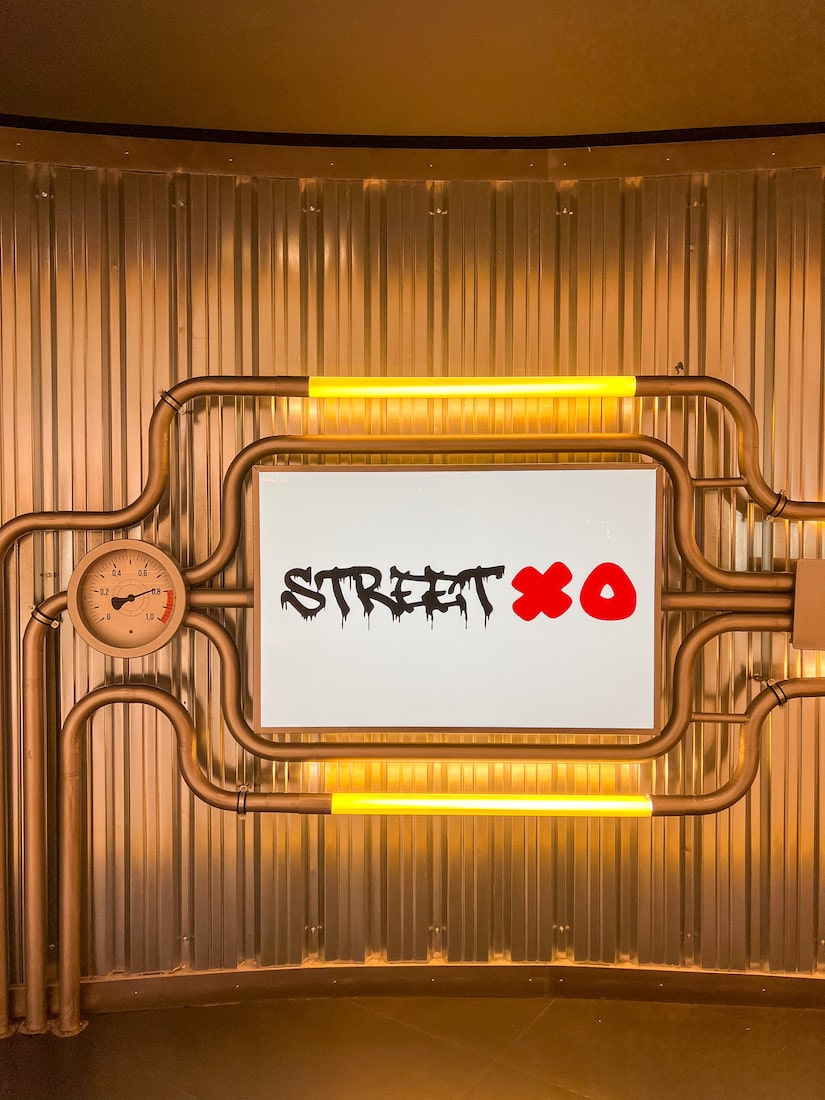
Finally, for cocktail aficionados, I always try to look at the 50 best bars in the world. Spain has several options ranking in the 50 best. Sips and Paradiso are options in Barcelona. During my stay in Madrid, Paradiso had a pop up bar serving a small menu of craft cocktails. Every drink was presented to perfection. Madrid also has Salmon Guru currently ranking at spot number 23.
Each country has its own nuances that set it apart. Restaurants in Spain generally open later. The first dinner service is often around 7pm. For some restaurants, it is even later. The food halls are a great way to experience the city and different types of food. My favorite was the Mercado San Miguel in Madrid. It can get rather crowded, but this is not to miss!
If you are considering a visit to Spain in the low season, I highly encourage you to take action and book the trip to visit Spain in January. Here is a summary of my travel tips. The temperatures were just right for wandering the city. The crowds were not overwhelming. The train system throughout Spain provides the opportunity to see more than one city during your visit. Popular attractions are less busy in January, so it is easier to book without as much advance planning. January may often seem like a less than ideal time to travel, but Spain might be the perfect destination.
